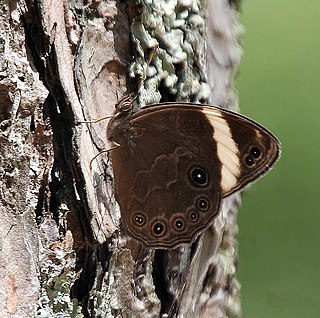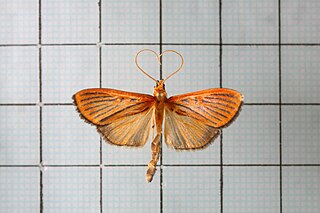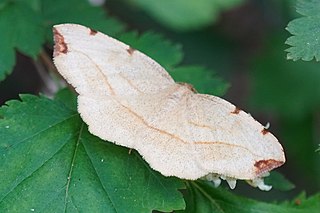
Lethe is a genus of butterflies in the subfamily Satyrinae of the family Nymphalidae. The genus was erected by Jacob Hübner in 1819. It includes the treebrowns, woodbrowns, foresters and their relatives. The species in the genus Lethe occur in temperate-tropical southern and eastern Asia, up to Indonesia and in North America.

The Satyrini is one of the tribes of the subfamily Satyrinae. It includes about 2200 species and is therefore the largest tribe in the subfamily which comprises 2500 species.

Polygonia is a genus of butterflies with a conspicuous white mark on the underside of each hindwing, hence the common name comma. They also have conspicuous angular notches on the outer edges of their forewings, hence the other common name anglewing butterflies. The related genus Nymphalis also includes some anglewing species; Polygonia is sometimes classified as a subgenus of Nymphalis.

Faunis canens, the common faun, is a butterfly from South and South East Asia that belongs to the Morphinae, a subfamily of the brush-footed butterflies. This species may include the Indian faun, Faunis arcesilaus.

Faunis arcesilaus, the Indian faun is a butterfly found in South Asia that belongs to the Morphinae subfamily of the brush-footed butterfly family.

Faunis assama, the Assam faun, is a butterfly found in South Asia that belongs to the Morphinae subfamily of the brush-footed butterfly family.

Faunis eumeus, the large faun is a butterfly found in South and South East Asia that belongs to the Morphinae subfamily of the brush-footed butterfly family.

Faunis is a genus of Asian butterflies in the family Nymphalidae. They are among the butterflies commonly known as fauns. They are relatively small-sized amathusiins, subtly colored in soft browns and violets, and range from China to the Philippines and Sulawesi.

Clystea is a genus of moths in the subfamily Arctiinae. The genus was described by Watson in 1980.

Tyspanodes is a genus of moths of the family Crambidae described by William Warren in 1891.

Spilopera is a genus of moths in the family Geometridae.

Dalla is a genus of skippers in the family Hesperiidae.

Hippotion is a genus of sphinx moths. The genus was erected by Jacob Hübner in 1819.
Pseudandraca is a monotypic moth genus of the family Endromidae erected by Tamotsu Miyata in 1970. The genus was previously placed in the subfamily Prismostictinae of the family Bombycidae. Its only species, Pseudandraca gracilis, was described by Arthur Gardiner Butler in 1885. It is found in Japan.

Artona is a genus of moths of the family Zygaenidae.

Xanthotaenia is a monotypic butterfly genus in the family Nymphalidae. Its single species is Xanthotaenia busiris, the yellow-banded nymph. They can be identified by a yellow strip along their forewings.

Faunis kirata, the broad striped faun, is a butterfly in the family Nymphalidae. It was described by Lionel de Nicéville in 1891. It is found in Peninsular Malaya, Sumatra and Borneo in the Indomalayan realm.
















